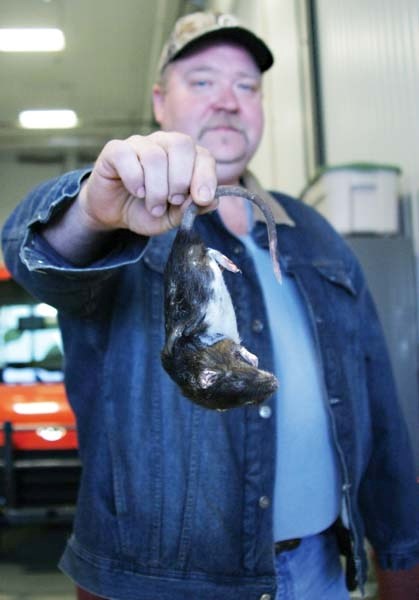A dead rat found north of Glendon came from a resident who feeds them to their pet snake, according to Matt Janz, the MD of Bonnyville's director of Agricultural Services.
“I don't know where this person got these rats from, but when we went to their house they showed us the package of dead rats from their freezer and it was stored with their food and everything else. But what do you say? I was kind of shocked.”
A neighbour's dog found the rat and brought it to its owners, who then brought it to the MD's Agricultural Services. The MD identified it as a Norway rat and investigated the occurrence.
Alberta has remained a virtually rat-free province for decades. Janz said the last time a rat was found in the area was 15 years ago when a pet store in Cold Lake sold them as pets. The MD took them and destroyed them.
He said Agricultural Services gets about 30 calls a year about rat sightings, but 99 per cent of the time they are muskrats, mice or pocket gophers.
“Very rarely have the rats actually been a Norway rat, so this was kind of unusual.”
He said people often confuse these animals along with roof rats or pack rats with Norway rats, which are six to seven inches long, have short hair, a hairless tail and mouse-like feet, unlike the webbed feet of a muskrat.
“Nobody's ever seen them so people don't know what they're looking for. So, that's why we get a lot of missed calls.”
A press release the MD issued called rats “one of the most destructive creatures known to man.”
Janz said a pair of breeding rats can multiply to 15-20,000 rats in one year, the main reason the province enforces a zero-tolerance rat policy.
They need warmth and must live near humans, he said.
Rats contaminate food and undermine the foundations of buildings, streets and waterlines through tunnelling.
They also weaken and deface buildings with their gnawing, according to an Alberta Agriculture information pamphlet.
Janz said they are more destructive than the other little animals they can be confused with.
To maintain a rat-free province, the government regularly inspects the borders. The first six miles of the border in the area are inspected twice a year, and the area further back once a year. The MD also follows up on any reported sightings.
Destroying rats falls under the Agricultural Pests Act of Alberta of 1942.
But as for feeding dead rats to your snake?
“Yes, you can bring in dead rats,” said Janz. “We kind of frown upon it, but there is no law against dead rats.”



